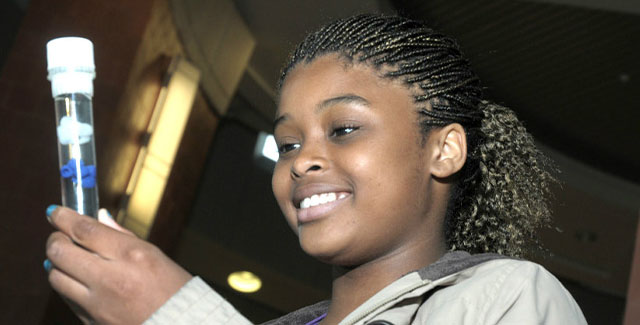
We support students getting their science & engineering projects Science Fair Ready!

The Science & Engineering Process
The most critical aspect of a project is the way the student explores and manages the project. A simple project can offer a great experimental challenge to the imaginative student. The role of the teacher, mentor or guardian should be one of guidance, encouragement and, as needed, constructive criticism.
Organized as Observe, Plan, Explore, Explain, the Science Fair Ready framework walks through the process for developing project ideas, conducting research, analyzing data, and communicating results.
Observe:
Choosing a Project
Students’ projects should be of an experimental nature—either investigating a research question or solving a design challenge. Although judges consider the aesthetics of a student’s exhibit, the main areas for evaluation are the scientific or engineering design approach, the thought processes used in completing the project, and the student’s mastery of the topic and concepts. The strongest projects are often driven by student interest and what is personally meaningful to them.
- Brainstorm ideas by generating questions after experiencing a phenomenon, reading an article or watching a video.
- Students should think about local or global issues that matter to them and what they could research or design that can help their community.
- Students can also consider potential careers in STEM to explore.
Find more suggestions for ideation activities here.
Plan:
Research and Design
The next key step to planning a project is determining your ‘testable question’ or the ‘problem to solve’. The focus needs to be not too broad, but not too limited. It needs to be something that can be observed and measured. Something that can be answered or solved in the time available through experimentation or design and testing.
Once you know what you want to address with your question or problem, you need to determine how you want to address it. This is your research or design plan and where you identify what’s feasible, what materials you need and the process you need to follow.
At this stage, students should be focused on the rules and using the research plan guidelines to make sure they are thinking through their project carefully and thoroughly. You can find templates to use or adapt here.
Explore:
Experimentation and Investigation
Depending on the nature of the project, students will need to experiment and investigate according to the plan they devised in the Plan phase. This may involve creating their prototype, testing and revising a design, or conducting multiple trials with different conditions and variables. Data collection and recording observations is critical in this step and we encourage students to record all data in their project notebook. This simulates the experience of researchers in a lab and reinforces a student’s processing and understanding.
This phase can provide complications. It’s important for students to expect this, so they are prepared to work through it, know how to ask for help, and learn from the unexpected. MSEF is happy to provide guidance and support to Massachusetts students through ‘office hours’ and/or connections to STEM professionals as coaches. Email [email protected] for more information.
Explain:
Communication and Presentation
Once data and observations are collected, students must analyze and interpret their findings. They will learn how to represent their findings and tell the story of their project in a few different ways. Students will need to create graphs & tables, written reports as well as poster presentations that summarize the key pieces of their project and discovery.
Students also will need to present their work through oral communication with a practiced presentation as well as prepare for Q&A with judges and volunteers.
Check out the Project Components Guide of best practices and exemplars for the project report, project display, and oral presentation.
Go to the Resources page here to find the Science Research or Engineering Design Handbook for a step-by-step guide for teachers and students. Additional resources are sorted by ‘Essential,’ ‘Supporting,’ and ‘Bonus’ to help you prioritize what to explore.
Find more resources like videos, templates, and guides for Students and for Educators on the pages linked below. Download or ‘make a copy’ of any resources to use and/or adapt for your classroom.
